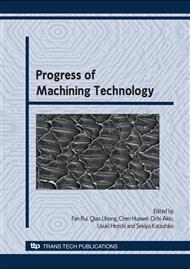p.420
p.424
p.428
p.432
p.436
p.440
p.444
p.448
p.452
Modelling the Polishing Efficiency of Polycrystalline Diamond Composites by the Dynamic Friction Method
Abstract:
This investigation aims to develop a quantitative model to estimate the material removal of polycrystalline diamond composites by dynamic friction polishing. The model accounts for not only the polishing parameters that govern the material removal mechanisms, but also the constitutive properties of the diamond composites subjected to polishing. The model prediction was justified by relevant experimental measurements.
Info:
Periodical:
Pages:
436-439
Citation:
Online since:
February 2009
Authors:
Price:
Сopyright:
© 2009 Trans Tech Publications Ltd. All Rights Reserved
Share:
Citation:


